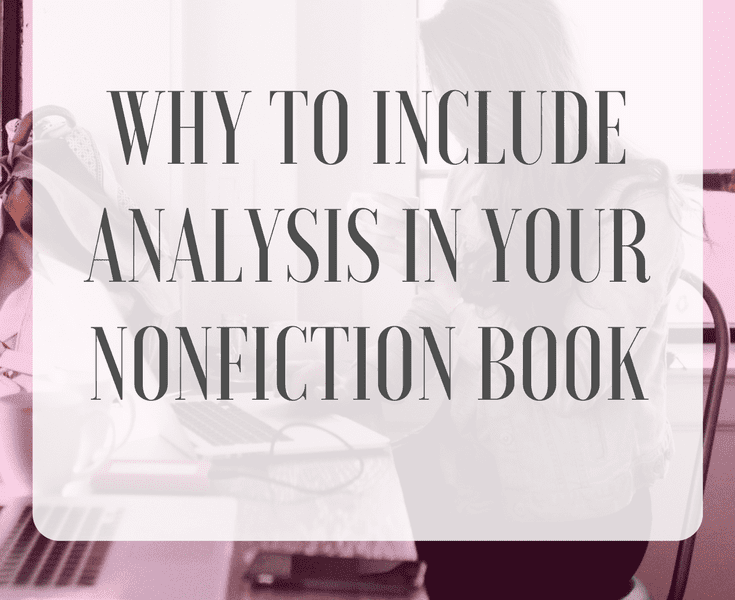Telling your story is great, but it’s even better if you can do some analysis along the way.
Especially if you’ve developed a program or learned lessons from your personal story that you want your audience to identify, you want to let the reader know what those lessons are. Sure, they may connect the story to the lessons anyway, but if they don’t, you’ve missed out on an opportunity to explain why you’ve developed what you did.
You can do this a couple different ways. As you’re telling the story, you can talk about the lesson or your epiphany throughout the chapter. Incorporating the lesson into the book this way gives a smooth read and allows the reader to see what you’re thinking as you tell the story. You can easily do this so it’s nonobtrusive, i.e. you don’t have to throw up lights and sprinkle glitter to let them know that you’re breaking down your thought process. Just include it as part of the narrative.
Another way to do this is to handle analysis at the end of the chapter. Setting up a pattern of telling your story and then analyzing is a great way to give the reader something to expect for each chapter. Why set up a pattern? Readers (and everyone really) feel comfortable with patterns, and by giving them something to expect, they will feel more connected with you. Patterns are reliable.
Either way, the analysis plays an important part in connecting with the reader.
Think about it. When you understand someone’s thinking, doesn’t it make you sympathize with them? That’s important for a writer. You want your reader to get inside your head. You want them to understand you.
What’s even more important is that you want them to have this same thought process with their own lives.
I’m working with a client right now whose book is about adopting a healthy lifestyle. He talks about how he was living with a poor diet and random exercise regimen for years and what his epiphany was for needing change. Then, in each chapter of the book, he had smaller epiphanies for things to add or change in the new routine he was setting up for his life.
What I love about the way he handled this is that he not only told his story, but he also explained his thinking and how he stumbled upon each incremental change. Then, he explained why that change was so vital that it became part of his routine.
If he just told his story, the reader would just see that it was an inspiring story. BUT, because he explained the reason for the new additions to his routine, he made it easy for the reader to understand why they should make those changes in their own lives.
If you’re writing a book for your business, especially one that talks about a way or life or a program that you’re developing, make sure you include the why. Give the reader analysis, and they will be more likely to buy from you in the future.

